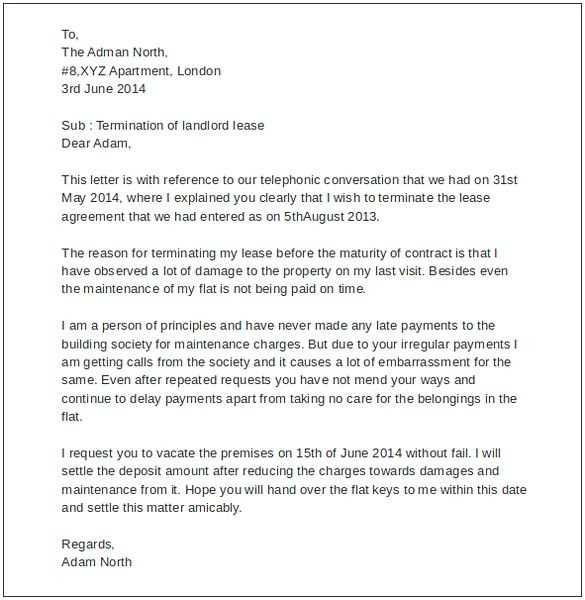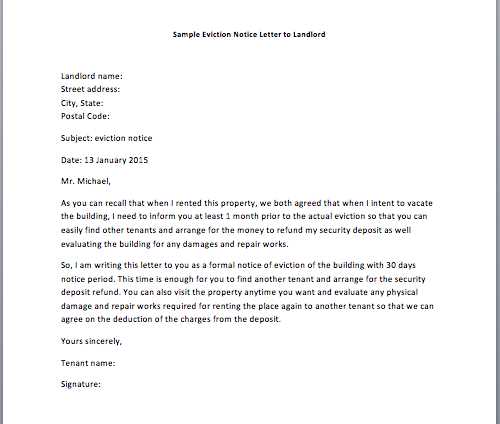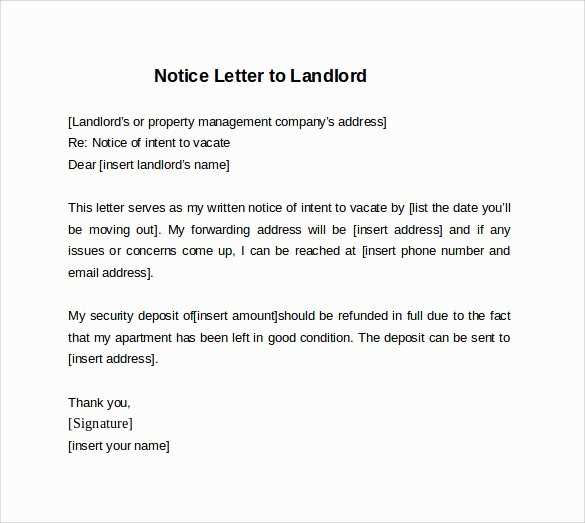Landlord Harassment Letter Template to Protect Your Rights

Every tenant has the right to live in a safe and respectful environment. Unfortunately, there are situations where the behavior of property owners or managers crosses professional boundaries, leading to discomfort and unfair treatment. In such cases, tenants can take action to address these issues and assert their rights.
One of the most effective ways to handle inappropriate actions from property owners is through formal communication. A well-crafted document can serve as a clear message that certain behaviors are unacceptable. It not only expresses your concerns but also sets a foundation for further legal steps if necessary.
Understanding the right time and manner to approach these situations is essential for safeguarding your living conditions. Crafting a direct and respectful message can help resolve conflicts without escalating the matter unnecessarily. This guide will walk you through creating such a communication that is both effective and professional.
What is Landlord Harassment?

Unwanted and aggressive actions from a property owner towards a tenant can create an uncomfortable living situation. These actions might be subtle or overt, but in any case, they involve overstepping the boundaries of a professional landlord-tenant relationship.
Types of Unacceptable Behavior
Such behaviors can vary widely, but they all have a negative impact on the tenant’s well-being and peace of mind. Common examples include:
- Excessive or unannounced visits to the rental property
- Verbal threats or intimidation tactics
- Refusal to make necessary repairs or maintenance
- Unjustified increases in rent or sudden eviction threats
- Privacy violations such as entering the home without proper notice
Recognizing the Signs
It’s crucial to identify these behaviors early in order to address the issue promptly. Recognizing the signs can help prevent further discomfort or even legal trouble. If you feel that certain actions are crossing the line, you may be facing an abusive situation that needs to be dealt with immediately.
Understanding the Legal Boundaries
Knowing your legal rights as a tenant is essential when navigating any disputes with property owners. Understanding what actions are legally permissible and which ones are considered violations can help protect your interests and prevent further conflicts.
There are laws in place to ensure tenants are treated fairly, and these regulations vary depending on your location. However, the fundamental principle is that property owners must respect the privacy, safety, and peaceful enjoyment of their tenants. If these rights are violated, tenants have the legal option to take action.
For example, there are specific rules about entry into a rented space, repairs, and communication. Property owners cannot arbitrarily invade privacy or make unreasonable demands. Tenants should familiarize themselves with local housing codes and tenant protections to ensure that their living conditions are respected at all times.
When to Use a Harassment Letter
Knowing when to formally address inappropriate behavior from a property owner is crucial to resolving issues effectively. A formal communication can serve as an official record of your concerns and set clear expectations for future interactions.
If you’ve encountered repeated or escalating actions that infringe upon your rights, it may be time to take a stand. This formal communication can help assert your boundaries and request the cessation of troubling behaviors. It’s particularly important when informal attempts to resolve the situation have failed.
Such a step is recommended when actions like unwarranted visits, threats, or neglect of essential repairs continue despite your verbal requests. By addressing the situation in writing, you create a documented record, which can be useful should the matter escalate to legal action.
Identifying Inappropriate Landlord Behavior
Recognizing unacceptable actions from a property owner is the first step toward protecting your rights. It’s important to differentiate between typical landlord-tenant interactions and behaviors that cross boundaries. Understanding these behaviors helps you take the necessary steps to address the situation.
Common Signs of Unacceptable Behavior
Some actions are clear signs of overreach or mistreatment. These often involve violations of your privacy, failure to fulfill contractual obligations, or abusive tactics aimed at intimidating you. Below is a table summarizing behaviors that may indicate an issue:
| Behavior | Explanation |
|---|---|
| Unannounced visits | Entering your living space without prior notice or permission beyond what is legally allowed. |
| Failure to repair | Neglecting necessary maintenance, which can affect your safety and comfort. |
| Intimidation | Using threatening language or actions to control or manipulate the tenant. |
| Excessive rent increases | Raising rent unjustifiably or without proper notice, violating rent control agreements. |
When to Take Action
If you experience any of these behaviors repeatedly or feel your basic rights are being violated, it may be time to take formal action. Documenting these instances is crucial to protecting your living situation and ensuring fair treatment moving forward.
Essential Components of a Letter
When addressing issues with a property owner, a carefully structured message can make a significant impact. Including the right elements ensures that your concerns are communicated clearly and professionally, increasing the chances of a prompt resolution.
Key Elements to Include
A well-crafted communication should contain certain critical pieces of information to be effective. Consider including the following:
- Your contact details: Include your full name, address, and contact information to ensure the recipient can easily identify and respond to your communication.
- Clear description of the issue: Be specific about the actions or behavior that are causing concern, providing dates and details where applicable.
- Reference to relevant laws: Mention any relevant laws or regulations that protect your rights, demonstrating your understanding of the legal framework.
- Your expectations: Clearly state what you want to be done or how the situation should be resolved. This helps the recipient understand your intentions and respond appropriately.
- Request for a response: Politely request confirmation of receipt and an outline of steps they intend to take to address the matter.
Writing Tips
To ensure your message is well-received, remember to keep your tone professional and respectful. Avoid using overly emotional language or threats, as this may undermine the seriousness of your request.
Key Information to Include in Your Document
When addressing a dispute with a property owner, it’s essential to include specific details that will ensure your concerns are understood and taken seriously. Properly outlining the issue and providing context can help clarify the situation and support your case if further action is required.
To make your communication effective, be sure to include the following important elements:
- Your full contact details: This should include your name, address, and contact information so the recipient can easily identify and reach you.
- Description of the issue: Clearly explain the problem, including dates and times if possible, and the behavior or actions that are causing concern.
- Reference to any applicable laws: Cite relevant legal protections or guidelines to show that you understand your rights and the laws that govern the situation.
- Your desired outcome: Outline exactly what you expect from the property owner in terms of resolution or action.
- Request for confirmation: Ask for a written response to confirm receipt of your communication and the actions they plan to take.
Including these components will help create a clear and professional document that will be difficult to dismiss or overlook. The more specific and organized your communication is, the better the chances of achieving a favorable outcome.
How to Address Harassment Effectively
When dealing with improper actions from a property owner, it is crucial to take the right steps to address the issue in a clear, organized, and professional manner. Properly handling the situation will help protect your rights and ensure that the problem is resolved in a timely and effective way.
Stay Calm and Document Everything

The first step in addressing any inappropriate behavior is to stay composed. Emotional responses may cloud your judgment, so it’s important to remain calm throughout the process. Begin by documenting all interactions, including dates, times, and specific actions taken by the other party. This documentation will serve as a crucial record should the matter escalate or require legal action.
Communicate Clearly and Professionally
Once you have gathered the necessary information, it’s important to express your concerns clearly and professionally. Ensure that your communication is direct, stating the issue and the impact it has had on your well-being or living situation. Be specific about what you expect as a resolution and always maintain a polite and respectful tone.
Addressing improper actions effectively requires a strategic approach, where professionalism and clear communication are key to resolving the issue and preventing further complications. Taking the right steps early on can significantly improve the likelihood of a positive outcome.
Steps for Taking Action Against Abuse
If you are experiencing mistreatment or unethical conduct from a property owner, it’s crucial to take the necessary steps to address the situation and protect your rights. Reacting promptly and appropriately will help to ensure that the issue is resolved and that you are not subjected to further inappropriate actions.
1. Document the Incident

The first step in addressing improper behavior is to carefully document all relevant interactions. Keep records of dates, times, descriptions of incidents, and any communication exchanged with the property owner. This evidence will be important if the matter escalates and you need to seek professional advice or legal assistance.
2. Seek Professional Advice
After gathering the necessary information, it is advisable to consult with a legal professional or tenant’s rights organization. They can guide you through your options, explain your legal rights, and help you understand the best course of action. Seeking professional support can also help ensure you’re approaching the situation in a way that aligns with local laws and regulations.
By following these steps, you can begin to take control of the situation and take the necessary actions to stop the abuse. Timely intervention and professional advice will provide you with the support needed to resolve the issue effectively.